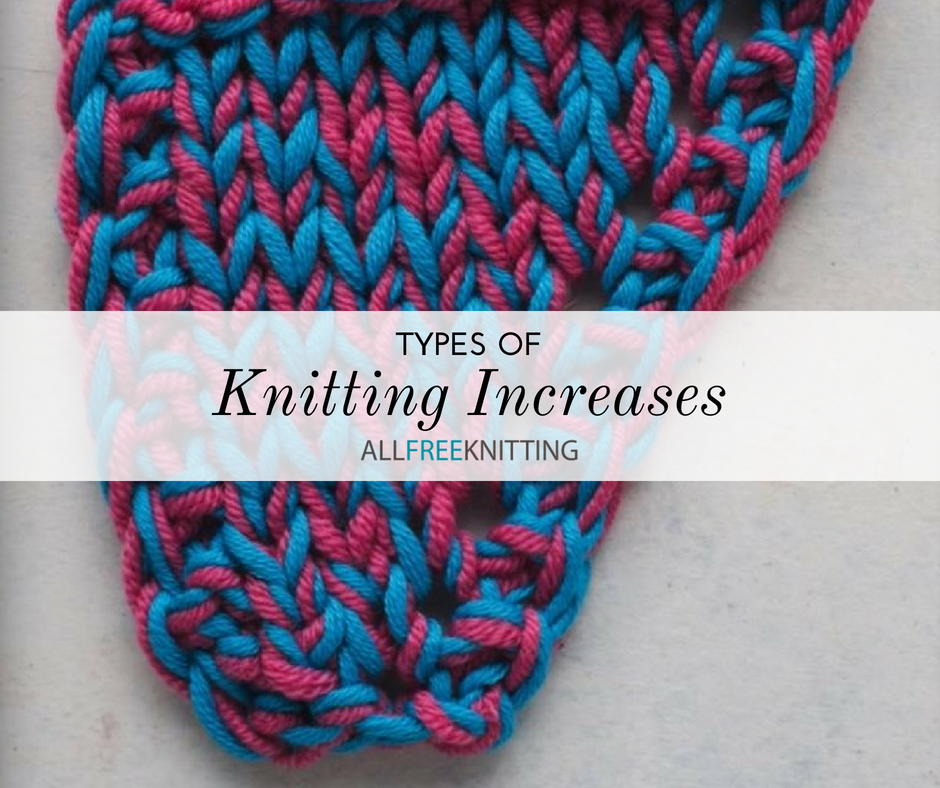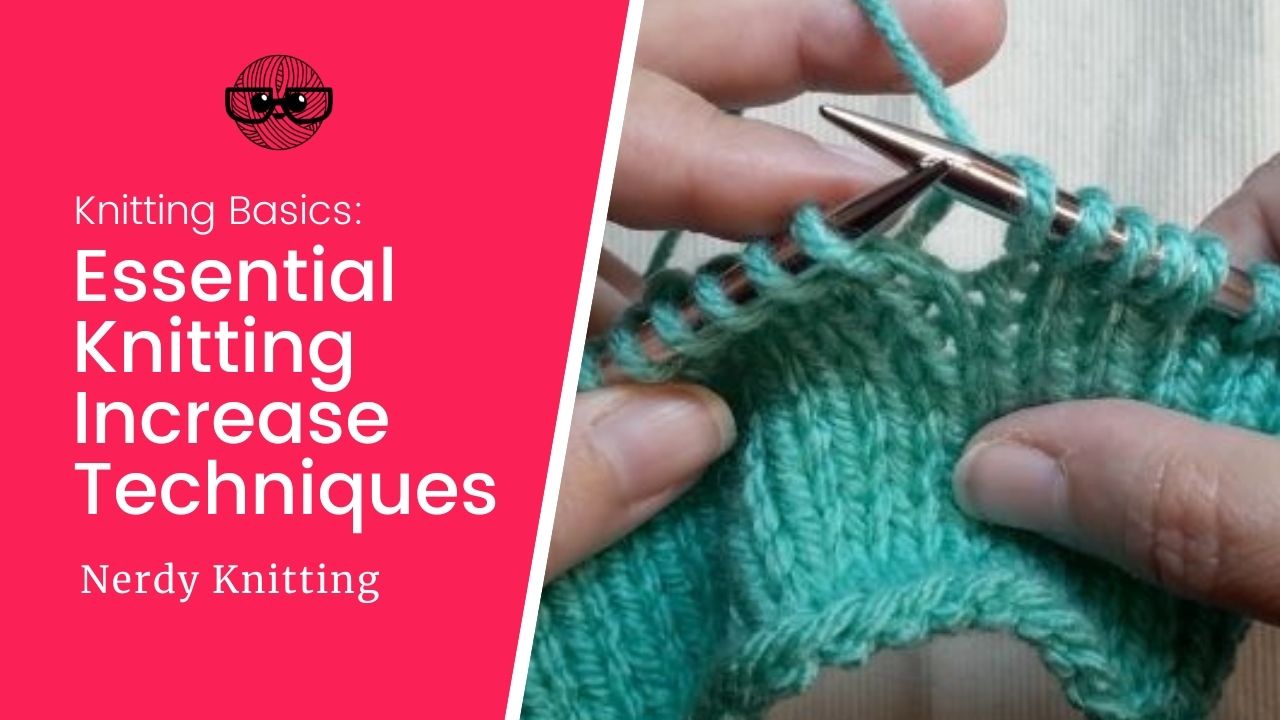Increases In Knitting
Increases In Knitting - Web everything you need to know about the m1l and m1r knitting increases. This method creates a nearly invisible increase and is. 1.1 knit front and back (kfb) technique. Find out how to work four different increases to add stitches to your knitting. So, your pattern asks you to m1r and m1l and you have no clue what it means and how to knit it? 1.3m views 14 years ago discover how to knit. What is stitch gauge and tension? Web how to increase stitches in knitting: Knit 1 front and back, purl 1 front and back; So if your pattern says lli, it means you have to perform the steps starting from #2 after a knit stitch) However, you may see instructions. = 60 stitches in total. Have you ever been shaping a project with increases, and wished the increases could blend into the fabric more? This method creates a nearly invisible increase and is. Increasing and decreasing stitches enables you to create knitted pieces with edges that taper and expand. This is useful for shaping fitted knit items, such as sweaters, hats, and mittens. One of the easiest and most common increases is to knit into the front and back of a stitch (kfb). 1.1.2 kfb technique tips and tricks. So, your pattern asks you to m1r and m1l and you have no clue what it means and how to. Rib, seed, basketweave, moss), depending on the number of stitches in a full repeat of the pattern, we will always go off the pattern. There are many different ways to increase but we’ll focus on the four common increases that every knitter should be aware of. But no two increases are exactly alike. I am using the knitter's pride dreamz. Knit one stitch as normal as a preparation ( note: 1.2.2 m1 technique variations and when to use them. 394k views 8 years ago knitting techniques. Type in stitch counts and click. 1.2 make one (m1) technique. Web everything you need to know about the m1l and m1r knitting increases. 1.2.2 m1 technique variations and when to use them. Web increases help you shape your knitting, which makes them essential for basically any knitted item that isn't a scarf or a dishcloth. Web the ultimate list of knitting increases with step by step tutorials and videos for. One of the easiest and most common increases is to knit into the front and back of a stitch (kfb). Knowing how to increase is an important skill for every knitter. Then, if we continue increasing or decreasing, we will eventually come back to the pattern. However, there is also a cosmetic element to consider. As with most other knitting. All of them have a particular lean. There are many different ways to increase but we’ll focus on the four common increases that every knitter should be aware of. Try the left and right lifted increases! Bar increases (also called knit front back) make one increases. In this video we will show you how to increase. In knitting an increase is a stitch that adds one (or more) stitches to your row/round. Number of stitches to increase: Web the primary purpose of increases in knitting is to shape the fabric by adding new stitches. One of the easiest and most common increases is to knit into the front and back of a stitch (kfb). This photo. 1.1 knit front and back (kfb) technique. Web increases help you shape your knitting, which makes them essential for basically any knitted item that isn't a scarf or a dishcloth. Some are single increases, some are double. Once a knitter finished their first garter stitch scarf or potholder, they will soon be confronted with knitting increases. By adding stitches you. = 60 stitches in total. Have you ever been shaping a project with increases, and wished the increases could blend into the fabric more? 394k views 8 years ago knitting techniques. Increases allow you to expand the total number of stitches in a row or round. Rib, seed, basketweave, moss), depending on the number of stitches in a full repeat. There are many different ways to increase but we’ll focus on the four common increases that every knitter should be aware of. So, your pattern asks you to m1r and m1l and you have no clue what it means and how to knit it? 1.1m views 9 years ago #makealong #woolandthegang. In this video we will show you how to increase. Web increases help you shape your knitting, which makes them essential for basically any knitted item that isn't a scarf or a dishcloth. Knowing how to increase is an important skill for every knitter. Type in stitch counts and click. Learning how to increase stitches in knitting is important for projects that need to change circumference (hats or mittens) or bend to follow curves (socks and sweaters). The calculator helps distribute increases evenly across a row. By adding stitches you can make a piece of knitting wider or create a curved edge. = 60 stitches in total. Rib, seed, basketweave, moss), depending on the number of stitches in a full repeat of the pattern, we will always go off the pattern. Bar increases (also called knit front back) make one increases. Tips for using the calculator. Have you ever been shaping a project with increases, and wished the increases could blend into the fabric more? Each method has certain characteristics that distinguish it from the others.
6 Types of Knitting Increases

LLI Left Lifted Increase in Knitting YouTube
![How to do the Central Double Increase in knitting [+video]](https://nimble-needles.com/wp-content/uploads/2020/07/central-double-increase-altenative-with-no-holes-swatch-1024x684.jpg)
How to do the Central Double Increase in knitting [+video]

How To Knit Lifted Increases knotions
![How to do the Central Double Increase in knitting [+video]](https://nimble-needles.com/wp-content/uploads/2020/07/central-double-increase.jpg)
How to do the Central Double Increase in knitting [+video]

How To Increase In Knitting Made Easy for Beginners TREASURIE

RLI Right Lifted Increase in Knitting YouTube

Knitting increases The ultimate list every knitter should know

How To Increase Stitches In Knitting Knitting increase, Beginner

How to Increase in Knitting (Essential Increases for Every Knitter
However, There Is Also A Cosmetic Element To Consider.
Knowing Some Increases And Decreases Will Allow You Branch Out Into Making Garments That Fit.
This Is Useful For Shaping Fitted Knit Items, Such As Sweaters, Hats, And Mittens.
But No Two Increases Are Exactly Alike.
Related Post: